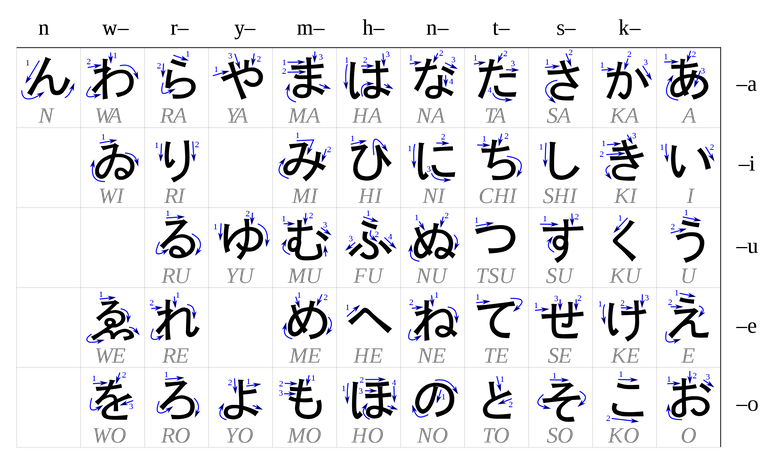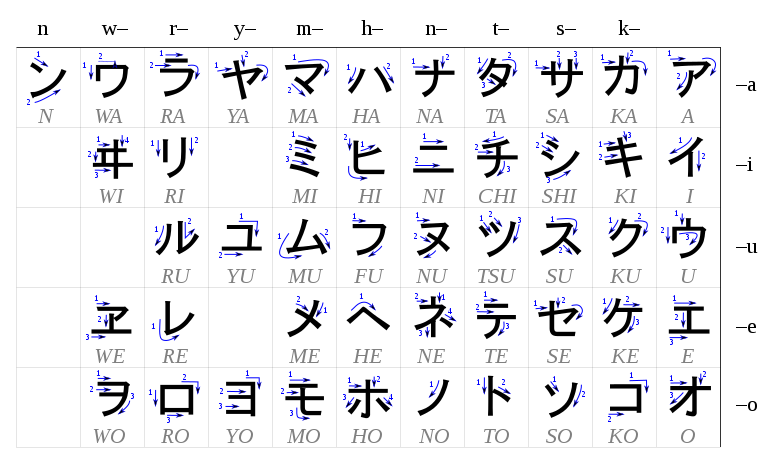Have you ever been interested in learning Japanese? I have been learning it for about two years now and I can tell you it is not only a very complicated language to learn, but it is a language that can be hard to master even after 30 years of studying. Why is this? I want to break down how the Japanese language system works and how you can start if you are interested in learning it. Take in mind it is a long journey and will take many hours to complete. In fact the CIA ranks languages on their difficulty for native English speakers and Japanese comes in as a category 5 language which usually requires around 2200 hours of study time to master, more or less depending on your aptitude to learn languages. So what makes Japanese so hard?
To begin there are 2 alphabets and a character system called kanji, all which need to be used to express yourself through everyday writing. Not knowing any of them would greatly hinder your ability to communicate via written word.
The first alphabet is hiragana which is used to represent words that are natively Japanese. Once it is learned, if you know the vocab you can communicate but can sometimes cause confusion as I will talk about later. Hiragana does have basic vowels, but most of the characters represent two letters at once as seen below by the chart. Once you learn them this can actually make things easier because you don’t have words that look like one thing and sound like something else like you would in English. (For example read being pronounced red or reed)

Next we have katakana which is an alphabet very similar to hiragana, but comes with certain sounds that hiragana doesn’t. The reason for this is because katakana represents words that have a foreign origin. So most likely your name will be in katakana (unless you have a Japanese name). I relate katakana to playing the game madgab, where you read something 10 times out loud until you finally understand what it means. For example Christmas is written as kurisumasu which unless you read it out loud you might not understand. The hardest part about katakana honestly is learning the alphabet because especially if you are taking Japanese classes, the focus on katakana isn’t as extensive.

The last one isn’t necessarily an alphabet in my opinion but rather a way to represent hiragana to the reader so they can understand a passage. In other ways it just makes the reading much faster. Every Kanji corresponds to a bit of hiragana to represent what someone is trying to say. Because there are a bunch of different ways to conjugate words in Japanese, sometimes the words will end up being the same, for example in English we see this with words like bass which can mean the instrument or the fish. To get around this, they use kanji to represent the word. Sometimes only part of the word or sometimes the whole word will have kanji for it and if you want to master the language it is necessary to learn kanji. Unfortunately, much of Kanji is extremely complicated and comes down to just basic memorization, which can take a while. If you can’t read kanji, even if you can speak the language fluently, it would still be hard to navigate your way around Japan.
Here are some examples of kanji below.

Unfortunately to really become fluent in Japanese ( by passing the n1 proficiency test in Japan) you would need to know how to read and write about 2000 of them. Take in mind some Japanese couldn’t pass the N1 though, so if you are looking to work for a Japanese company, usually the n2 suffices which requires around 1000.
I hope you enjoyed a beginning lesson on the alphabet. The next one im going to do is probably goin g to be about the best ways to learn Japanese, what resources are good to use ect. If you have any specific questions ill try to answer them in the comments
-calaber24p
GREAT! Domo arigato as I will be needing this with many students over the next few years. Namaste :)
excellent post my friend @ calaber24p congratulations to learn an ancient language, thanks for another wonderful post compratir
OMG Thank you for this !
This is so awesome upvoted.
Hmmmmm, I think I will go with Google translate, even with all its faults.
Such a hard topic to write about language. You have the right approach just introducing one thing. I tried to do it all in one post...
https://steemit.com/name/@katharsisdrill/chinese-japanese-stamps-part-1-choosing-a-name
I will continue the series soon, but I have been very busy. Next time I will make it simpler like you.